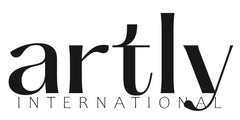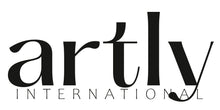I'll Be Your Mirror: A Review

J. Peeler Howell, Editor
I don’t want to “interact.” I am being prompted to interact by Lynn Hershman Leeson’s installation Lorna at the Fort Worth Museum of Modern Art. The work is featured in the exhibition, “I’ll Be Your Mirror: Art and the Digital Screen.” Lorna includes chairs and a television and is set up to look like the lonely apartment of the fictional, Texan, agoraphobic woman, Lorna, who only interacts with the outside world via her television and her telephone. Or I guess when a museumgoer interacts for Lorna by changing the channel on her television, maybe. Am I Lorna?! Do we all become Lorna as we interact with her television and watch the repetitive, limited, finite chapters of her (our) life(s)?! I don’t know. I do know that interacting with Lorna’s TV is the last thing I want to do right now. I just don’t feel like interacting with an artwork that is supposed to demonstrate some sort of point about how technology might keep us from being forced to interact. So I don’t.
Nam June Paik’s Video Flag Y isn’t working. This work is eighty-four television screens that are supposed to show an American Flag. When it works. A temporary plaque to the right provides me a QR code where I can use my phone to see a similar work in the Los Angeles County Museum of Art. Again, I don’t care to interact and use my iPhone to see Video Flag Z right now. I’m more interested in Video Flag Y, the one I’m standing in front of. That doesn’t work. Or is being repaired. Or something. But this work is now becoming interesting, and I start to really enjoy that it’s not working, and I start to think I prefer it this way (even though I’ve never actually seen it work). And now I’m here looking at this broken piece of technology and feeling the frustration of it not working. But in a sense, for me, for the most part, regarding my relationship with technology, it worked perfectly.

Vuk Ćosić’s The Birds has lost its signal. It’s a screen that is supposed to show something besides “No Signal.” Most likely something about birds. One of the guys suggests to another guy, “maybe just hit the reset button.”
One of Huntrezz Janos’s Infiltiterations is offline. It’s a diptych of portrait-oriented screens. They are both supposed to take a live video of me looking at the screen and change my face to something else. Like an Instagram filter does. One of them works, so I get the effect, and I look like a Parliament-Funkadelic, psychedelic-type creature, but the other one just shows me staring back at me. A black screen. A mirror.

A lot of the works have audio. The audio bleeds over into the adjoining galleries in the museum. You never really get away from it. You’re listening to one and you hear the others. It’s distracting. Disorienting.
There are some works on canvas in the exhibition. Untitled by Laura Owens is a remarkable painting. She uses digital processes and screen-printing as well as elements of more traditional painting and elements of graphic design. She’s a master at trompe l’oeil at this scale, and the painting has a very convincing three-dimensional effect. I keep coming back to this painting. It doesn’t have a power button. It doesn’t go offline or lose its signal. It’s immediately accessible. By the very nature of its materials and assembly, it doesn’t ever not work. I’m comfortable with it. Something that I never genuinely feel when I interact with technology.
I’ll Be Your Mirror: Art and the Digital Screen works well as an exhibition. The exhibition confirms the role the digital screen plays in society. My limited understanding of all things digital leaves me with a lingering sort of nagging feeling that any of my devices might not work today. Or tomorrow. It might all shut down. A residual uncertainty. And if it does, how should we look at ourselves? Where did our mirror go? I guess you can always see yourself in a broken black screen. Broken or not, the screen pulls us back in.





Leave a comment